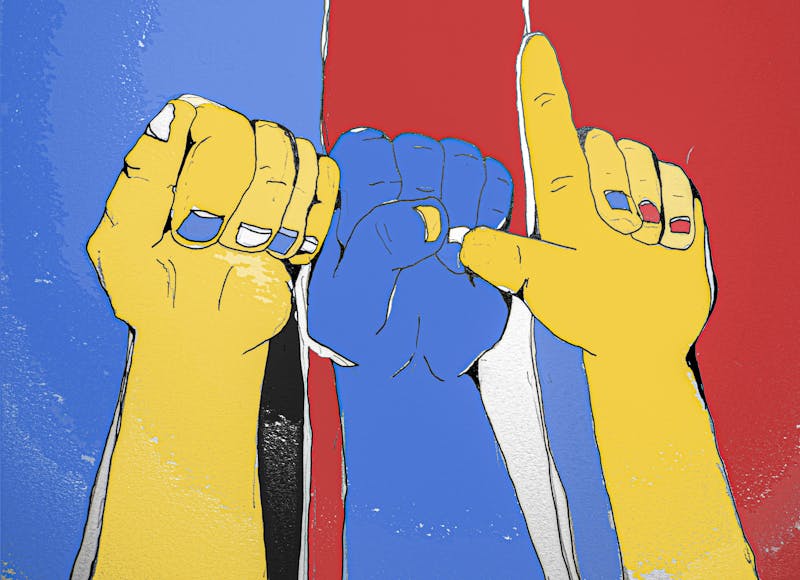
International Week of the Deaf (IWDP), formerly known as International Week of the Deaf, promotes awareness, equality and inclusion in the Deaf community. IWDP is held in the last week of September each year. This is also Deaf Awareness Month.
Sheryl Prusinski, a full-time Deaf faculty member at Ohio University, said, “The aim was to raise awareness about Deaf people, our languages, our communities, and our cultures on a global level. ‘ said. sign language, or ASL.
According to the founders of the World Federation of the Deaf (IWDP), an international non-profit organization made up of associations of the Deaf around the world, IWDP was established in 1958 to promote equal rights for the Deaf community. rice field.
However, many deaf people are unaware of the depth of the Deaf culture and community. This includes knowledge of terminology. According to the National Association of the Deaf, “the deaf” should be lowercase when discussing the hearing condition of being deaf and should be capitalized when referring to a group of deaf people who share a culture and language, ASL. there is. .
“Deaf culture, like language, is the part of the culture that you really have to immerse yourself in,” says another dedicated deaf and co-advisor to the ASL club at Ohio University. Lori Woods said in ASL. “The community welcomes anyone who wants to learn more about the norms of Deaf culture,” she said.
Mr. Prusinski said that deaf culture is the mannerisms, attitudes and traditions that have been passed down since the culture began to emerge in the 1700s.
“There are traditions and certain things that have been handed down over the years, like art, ASL stories, ASL literature,” Prusinski said.
Both Prusinski and Woods stress the importance of ASL as a big part of their culture. However, despite being at the heart of Deaf culture and something that Deaf people are very proud of, people have seen it as an oppressive tactic.
“People have tried to eliminate or strip sign language,” Prusinski said. “That’s why we raise awareness of the deaf and let people know that no, no, no, our most valuable asset is his ASL.”
Education and inclusion are critical to bridging the gap between the deaf and hearing communities. OU has an office that prioritizes accessibility, but neither OU nor Athens he does anything for IWDP. However, Osaka University students took the initiative to raise awareness.
“The students are really the driving force behind it,” says Woods. “I’m amazed at how knowledgeable and excited they are.
Two on-campus student organizations work together to educate and advocate for the deaf community. The ASL Club, an organization whose purpose is to reduce the gap between the deaf and hearing communities, and the National Student Speech Language Hearing Association (NSSLHA), an organization. Prepare Communication Science and Disability (CSD) students for their field.
On September 26th from 10am to 2pm, the ASL Club and NSSLHA will distribute Deaf Awareness Month flyers at the Glover Center.
“I think it’s important to have an event like this because no one else has actually done it,” said Emily Hill, a senior researcher who studies CSD and NSSLHA vice president.
According to ASL interpreter Alli Kisker, ASL is another way to bridge the gap between the deaf and hearing communities.
“Learn sign language,” Kisker said. “Also, always keep accessibility in mind.”
According to Woods, OU recently hired a full-time ASL interpreter. This initiative will continue to support accessibility for Deaf faculty and students.
September 30th is also International Interpreters and Translators Day, another day in September that celebrates part of the Deaf community.
However, Deaf culture and the Deaf community should be celebrated and recognized every month, not just in September.
“I am happy to connect with[the deaf community]and have a conversation on a deeper level,” said Miranda Kress, a junior studying CSD and president of the ASL Club. “And this month, which I’m particularly emphasizing its importance, is every month.”
Continuing to learn about Deaf culture and understanding the pride that Deaf people feel about their community is essential to inclusiveness and equality and why IWDP was founded.
“I’m sure I have that culture and I’m proud of it,” Woods said. “I think it’s a very unique feeling.”
For more information on IWDP, please visit the World Federation of the Deaf (wfdeaf.org).
Cheryl Prusinski was translated by Alli Kisker.
Lori Woods was translated by Natalie Kraft.
sl326820@ohio.edu
